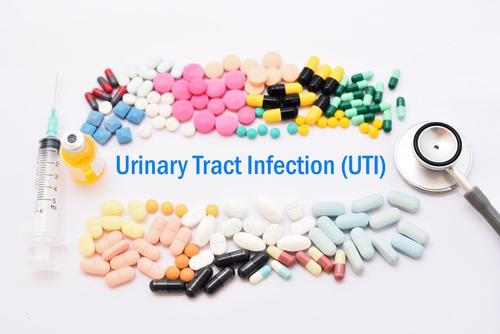“Uncomplicated” Urinary Tract Infections: Remember When They Were Easy?
In the latest issue, Editor-in-Chief Jason Gallagher, PharmD, FCCP, FIDP, FIDSA, BCPS, discusses the continuous antibiotic trade-off of targeted vs broad spectrum therapies and cheap vs expensive options as they relate to UTI treatment.

Quickly—name a common infection that has a standard evidence-based treatment strategy that is usually managed by nonspecialists. To me, uncomplicated cystitis would be at the top of this list. We have had an evidence base for years about the optimal treatment of uncomplicated cystitis (at least for women). We know that fluoroquinolones and trimethoprim-sulfamethoxazole work in short 3-day courses, that nitrofurantoin works for slightly longer 5-day courses, that fosfomycin sometimes works in single-dose courses, and that tetracyclines do not work well in any courses. We lack this kind of knowledge for many infections.
We also know that antibiotic resistance has been crushing the utility of our drugs of choice for years, more than we would like to admit. Guidelines have recommended a threshold of 20% resistance to trimethoprim-sulfamethoxazole before abandoning it as a first-line treatment for acute uncomplicated cystitis,1 but many factors complicate this recommendation.
First, uropathogen-specific antibiograms are wonderful tools but are rarely utilized.2 Clinicians often use Escherichia coli susceptibilities as a surrogate for uropathogens but this practice misses differences in important populations, overcalling activity for some drugs (such as nitrofurantoin) and undercalling them for others. Even when urinary specific data are evaluated, antibiograms and surveillance studies alike also pool data from disparate groups such as patients in hospitals, emergency departments, and outpatients, can result in average resistance values being applied for groups that are very different.
Second, although inactive antibiotics are more an inconvenience than a danger for most patients with “uncomplicated” infections, guidelines are broadly applied and can be mistakenly utilized. An inherent truth in general guideline construction is that guidances meant for most cases will not apply to all, but people take it that way and miss nuances. Guidelines with deliberately weak recommendations still become standards of care.
Third, can we admit that inactive therapy for 1 of every 5 episodes of uncomplicated cystitis is a disturbingly high amount? The low cost of trimethoprim-sulfamethoxazole combined with its other favorable characteristics makes it a hard therapy to let go. Most of the other recommended therapies are relatively inexpensive as well. Even renally excreted fluoroquinolones, which the now-retired Infectious Diseases Society of America guidelines de-emphasized, are generic and not expensive for most patients.
My above musing leads to the current quandary. After many years lacking development of new oral gram-negative antibiotics, several agents in the pipeline are maturing. All are active against many more strains of uropathogens than our current flawed but cheap regimens of choice. Two of them, penem agents, have had difficulties obtaining approval with earlier studies.3 Whichever agents make it to market, it is safe to say that none will be inexpensive. They all also represent broader spectra of activity than current uncomplicated cystitis drugs.
Therein lies the dilemma. Once again, we are faced with the continuous antibiotic trade-off of targeted vs broad spectrum therapies and cheap vs expensive options. Again, we have drugs that fill an unmet medical need but are faced with their own ecological and economical limitations. And again, we are stuck with the consequences of lacking widely available diagnostic tools that could identify the patients most likely to require expensive, novel agents in a time frame in which they could be the most useful. With uncomplicated cystitis, the urgency may be less than more complicated disease states, but the fact that patients are usually treated as outpatients empirically without culture results will make stewarding antibiotic selection even more difficult.
We have wanted and needed new oral gram-negative antibiotics for many years. If our wishes are granted, I now wonder if we will know how to use them and whether they will be commercially successful. Only time will tell.
References
1. Gupta K, Hooton TM, Naber KG, et al; Infectious Diseases Society of America; European Society for Microbiology and Infectious Diseases. International clinical practice guidelines for the treatment of acute uncomplicated cystitis and pyelonephritis in women: a 2010 update by the Infectious Diseases Society of America and the European Society for Microbiology and Infectious Diseases. Clin Infect Dis. 2011;52(5):e103–e120. doi:10.1093/cid/ciq257
2. Pogue JM. Antibiograms for optimizing empiric therapy: use them wisely. Contagion. August 21, 2018. Accessed February 14, 2024. https://www.contagionlive.com/view/antibiograms-for-optimizing-empiric-therapy-use-them-wisely
3. Mangum BR, Pogue JM, Barber KE. Tebipenem and sulopenem: dynamic duo or double trouble? Curr Infect Dis Rep. Published online February 10, 2024. Accessed February 14, 2024. https://link.springer.com/article/10.1007/s11908-024-00831-1

Newsletter
Stay ahead of emerging infectious disease threats with expert insights and breaking research. Subscribe now to get updates delivered straight to your inbox.
